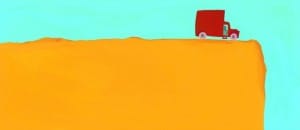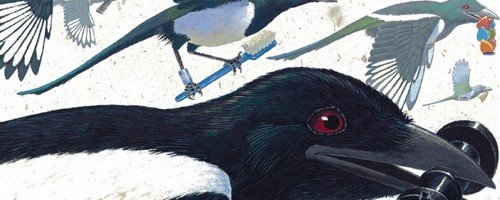“Spring is sprung, the grass is riz. I wonder where the boidies is…”
It started out simply. Ceri Levy, a film-maker, inspired by the subjects of his most recent documentary, The Bird Effect, embarked on an exhibition of extinct and endangered birds, soliciting work from a number of artists, writers and musicians, including one Ralph Steadman. Asked to produce a single extinct bird illustration of his choosing, Steadman, a life-long balker of rules, created more than 100 avian masterpieces; birds of every species, including the newly ‘discovered’ Lousy Grudgian, the Humpbacked Blue Mult, and the Gob Swallow. A special room was dedicated to his illustrations for the duration of the Ghosts of Gone Birds exhibit in 2011, and in 2012, in collaboration with Ceri Levy, Extinct Boids was hatched.
There are many great things about Ralph Steadman, not least of which is the fruitfulness of his imagination. No sooner had I ordered Ralph Steadman’s Cats (to be reviewed), Extinct Boids showed up on his website, and shortly thereafter, under my Christmas tree. It’s a hefty book. The long, rectangular shape is perhaps a nod to the over-sized John James Audubon Birds of America portfolio produced in the late 1800’s, minus the field guide accuracy (and ornithological death count.) Most of the birds in this tome are extinct or endangered birds, like the Great Auk, whose last surviving member supposedly caused a great storm off the coast of Scotland and was therefore killed as a witch, but not all. Attention is also paid to the long suffering residents of Toadstool Island, accessible only by the HMS Steadmanitania, where a ‘confusion of boids’ have lived relatively unobserved, until now…





